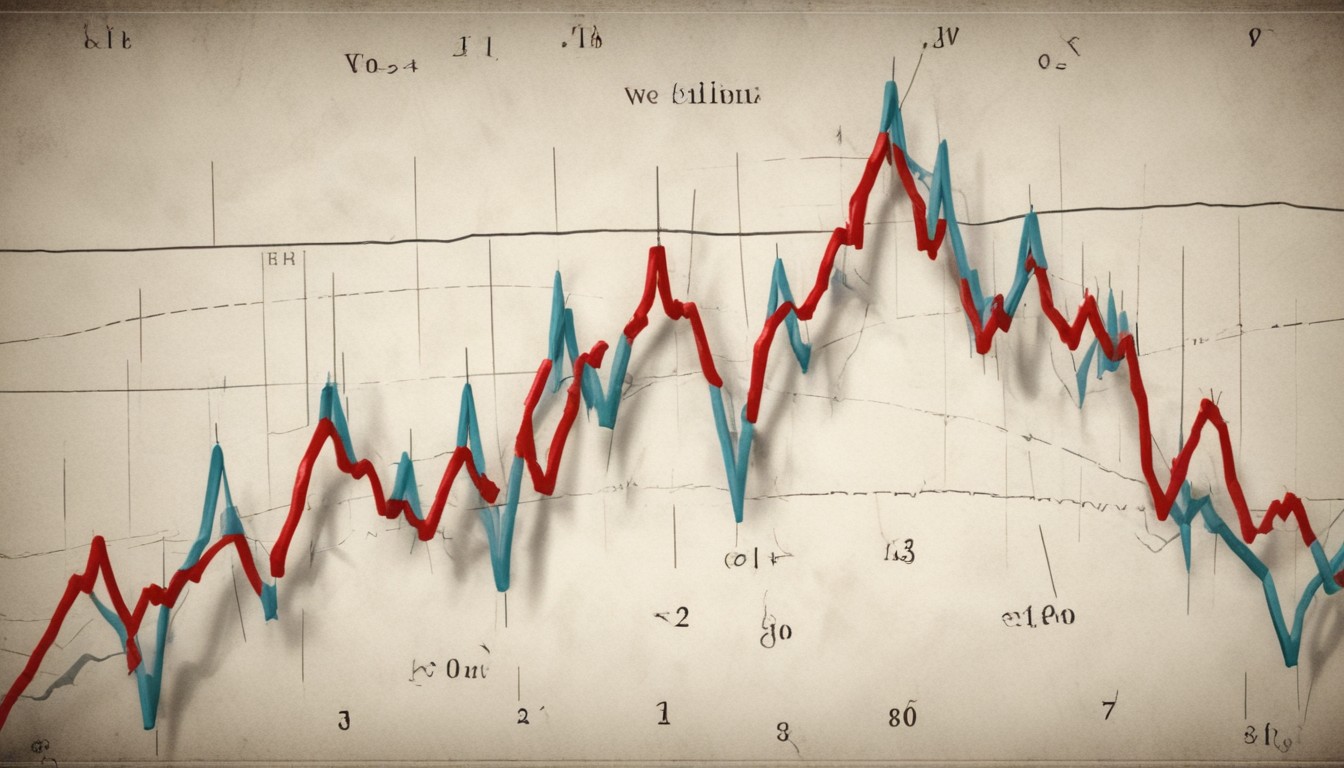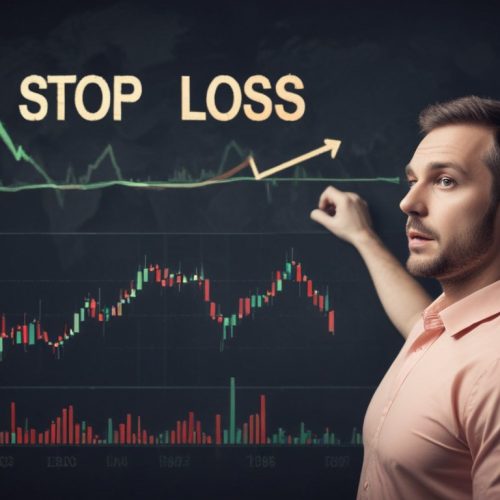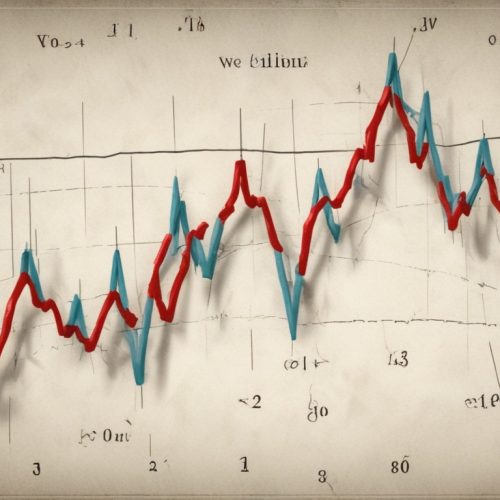Volatility – is a quality of markets that implies frequent and wide value swings both on certain assets or the market as a whole. The more volatile the market is the less predictable and stable the price movements will be. Consequently, volatility increases the risks associated with investing.
All markets are volatile – it is an integral part of trading. Because of certain events, however, the volatility rates can suddenly increase. These events can be worldwide, market-specific, industry-specific, and not necessarily financial. Prices on corn change if the latest harvest was poor. Therefore, the shares of corn-producing companies will also alter prices.
Principle behind volatility
In simple words, volatility brings unexpected shifts to the market. You can look at it under different angles, because it brings different issues for many people, as well as benefits for some.
(!) For shareholders and other investors with assets on their hands, volatility brings the most uncertainty. Volatility is integral, but you can never tell how the prices will react to different events. The market value of their assets may rise or fall. It may be either a temporary change or a lasting one.
Still, market volatility is more likely to cause downward trend. Volatile stock markets are at risk of general price fall, even if they currently experience an overall surge, recent studies suggest. Again, it has a lot to do with uncertainty and the feeling that even the little help that investing strategies can give you is immaterial next to the power of volatility.
(!) For active traders, volatility can mean opportunity, especially for the bearish traders (those taking benefit in downward movement). The overall price decreasing trend, as well as general expectation that prices are likely to fall at any moment, push certain individuals to participate in bearish trading, like short selling.
Alternatively, the shares that possess high historical volatility but generally don’t pursue a downward trend attract put options – accords of possible sales in the future. Options don’t oblige people to sell shares, but they give an opportunity to do so. The logic is simple, if the ever-changing price rises, time to sell, but if not – then option’s off.
It’s important to remember that volatility waves often pass and the value returns to its healthy size. That’s why professionals suggest buying stock when the price hits the lowest volatility point. It all depends on the type of risk you’re dealing with and whether it’s possible to amend it artificially by the means of the companies. More on that later.
(!) For the companies that issue shares and trade in other commodities, the massive fall of price, that is often the consequence of the sudden volatility wave, obviously means losses. It is a good thing, because without the losses the companies wouldn’t try to bring the prices back into the healthy position.
It’s especially in their interests since one of the sources of volatility is an unsystematic market risk, which occurs in a specific company or industry, and not in the market as a whole, as opposed to systematic risk.
The sources of volatility
While on the topic of volatility sources, let’s discuss the two major sources of volatility – the systematic and the unsystematic market risks.
Volatility itself is a metric of market risks, in essence. They represent the risk of losses conjugated with price alteration. As mentioned, systematic risk is the risks that arise from worldwide or at least market-wide events, while unsystematic risks are consequences of local issues.
There are ways of decreasing the losses from price fluctuations, and it’s useful to know when the volatility is going to strike to make the most of these means. By following the recent events in the industry and the market, you may be able to discern the sources of unsystematic risk.
Systematic risks are sizeable events and changes that may and will change the situation on the global market. Among them you can find war, financial crisis, political turmoil, even inflation in the big company. These usually affect some portion of the markets, not just the one you’re currently trading on.
Unsystematic risks, for their part, only affect either asset, the current market or the industry. For instance, if the asset suddenly changed its price because its issuer made terrible financial decision, then this decision caused unsystematic risk. Unsystematic risks are easier to deal with, and often exchange and the company work together to sort the issue out.
Protection means
There are several legitimate and wide-spread means of protection against volatility. Though you can’t fully protect your investments from harm, you can soften the hit.
Hedging strategies
Hedging is a very common practice in trading community, but the concept itself is even more common in wider world. Hedging is largely the insurance. Different strategies may vary, but they essentially are doing the same thing – insure some of your investments. Mind that hedging will also decrease your potential profits, so use your insurance wisely.
The most common hedging practice is to subscribe to a put option while also keeping an open long position. Simply put, you keep the parachute close-by while waiting for the price to rise. Since put option allows you to sell the shares at a designated strike price, you effectively can cut your losses if things go south.
Again, in order to acquire a put option, you’ll have to reserve some of your funds for it, and it means fewer potential profits, although also more protection.
Diversification
Asset portfolio diversification is usually a practice done by experienced investors, not usual traders. It implies diluting the asset variety in your portfolio (a collection of assets at hand). The logic is simple – unless the risks affect the entire market, some of your assets will survive the volatility wave.
Say you have a portfolio comprised of assets A and B. When you hear about the possible oncoming risks for both of these assets, you decide to dilute your stock by selling a portion of your current portfolio and adding also assets C, D and E, all of which are reputably very stable.
If the wave comes, the assets A and B will suffer, but since you’ve already shifted some of their value to assets C, D and of course E, not all your portfolio will go to waste. That’s how diversification works. Keep in mind, however, that this strategy is advanced and if you aren’t a big company or a big-shot investor, hedging will be of more use to you.
But if you think about attempting diversification, look for several stable candidates for value shifting in case of emergency.
Predicting the volatility
There’s generally no obvious way of predicting the sudden price rises and falls, other than monitoring and making conclusions. It’s a good enough method for most, but its flawed nature, some trader choose rather different indexes that do a better job but require understanding and reading skills.
One of the more well-known market volatility detection tools is called Chicago Board Option Exchange Volatility Index or VIX, for short. It’s a predictions index that detects possible dangers of volatile nature that can happen in the future 30 days.
Now, the exact principle behind VIX is very intricate. In short, it works on the basis of another well-known index, one that instead tracks stock performance from 500 different companies. It’s called S&P 500 drops, and when it becomes lower, the risk of volatility also rises.
It’s also the second trusty way of keeping tabs of volatility. There are more volatility prediction indexes, but most aren’t well-known and their reputation isn’t exactly clean, unlike S&P. Conduct a double authentication of sorts – if the first index is rising, check the second one. If it’s lowering, raise the alarm.






